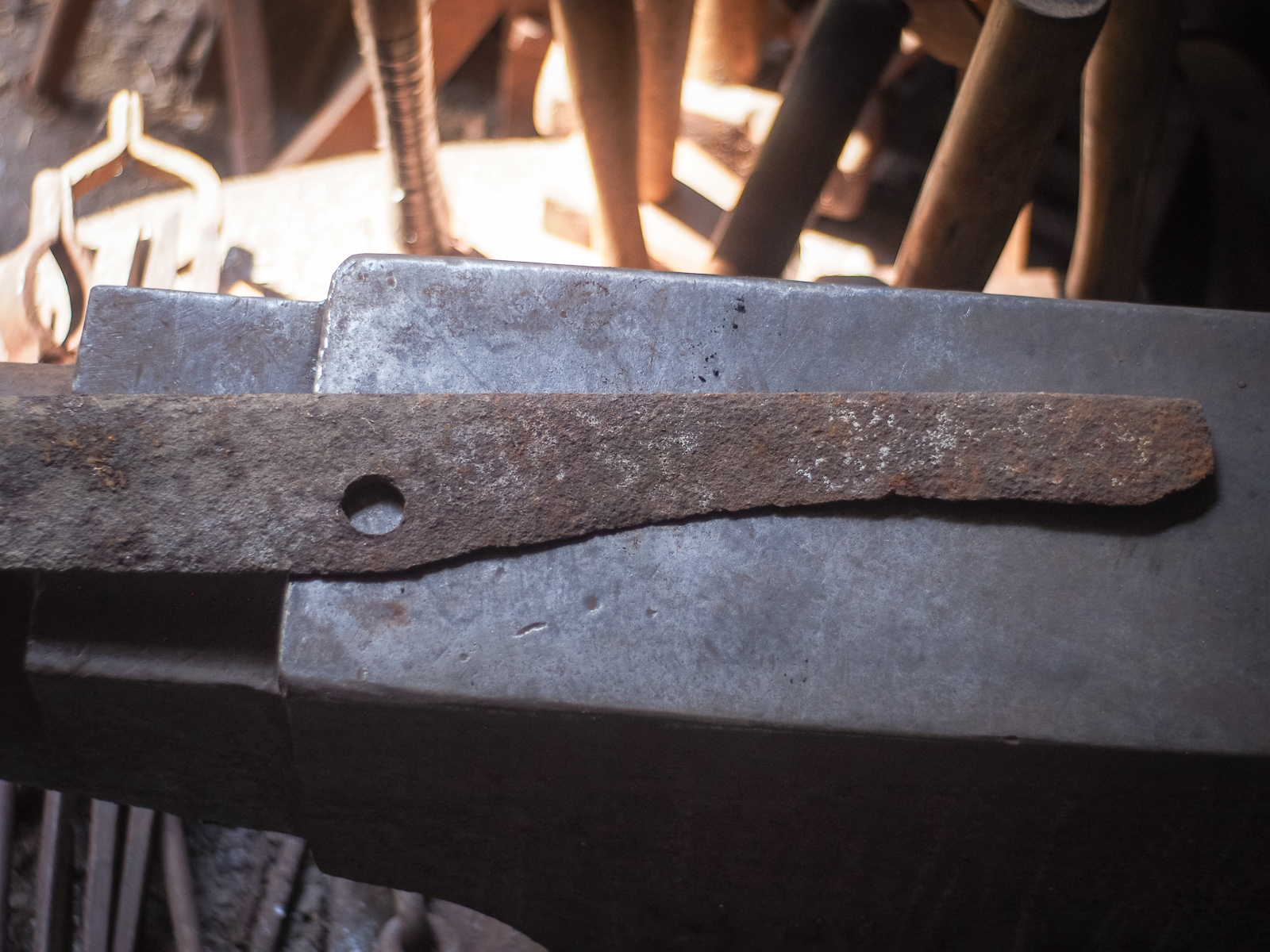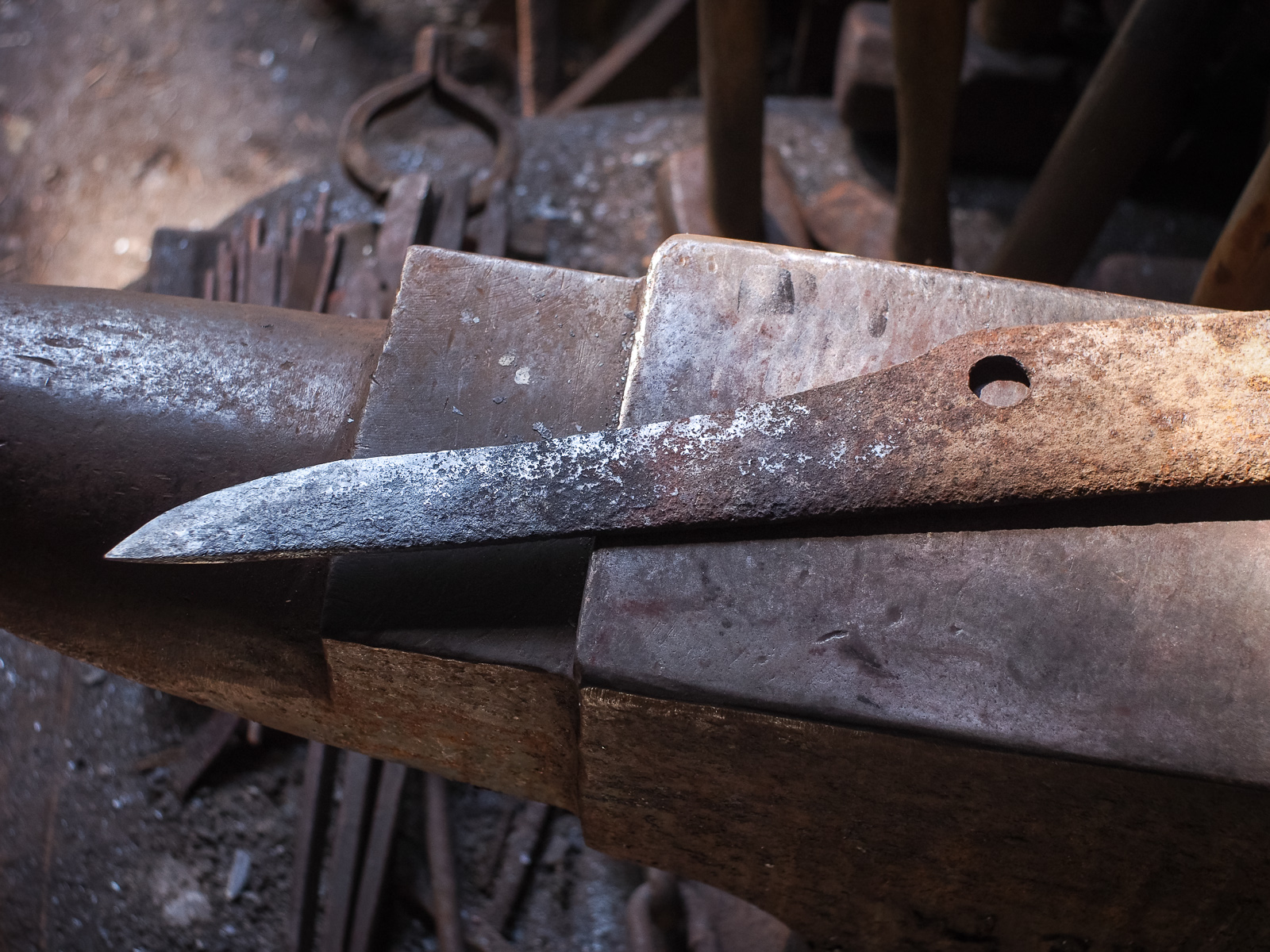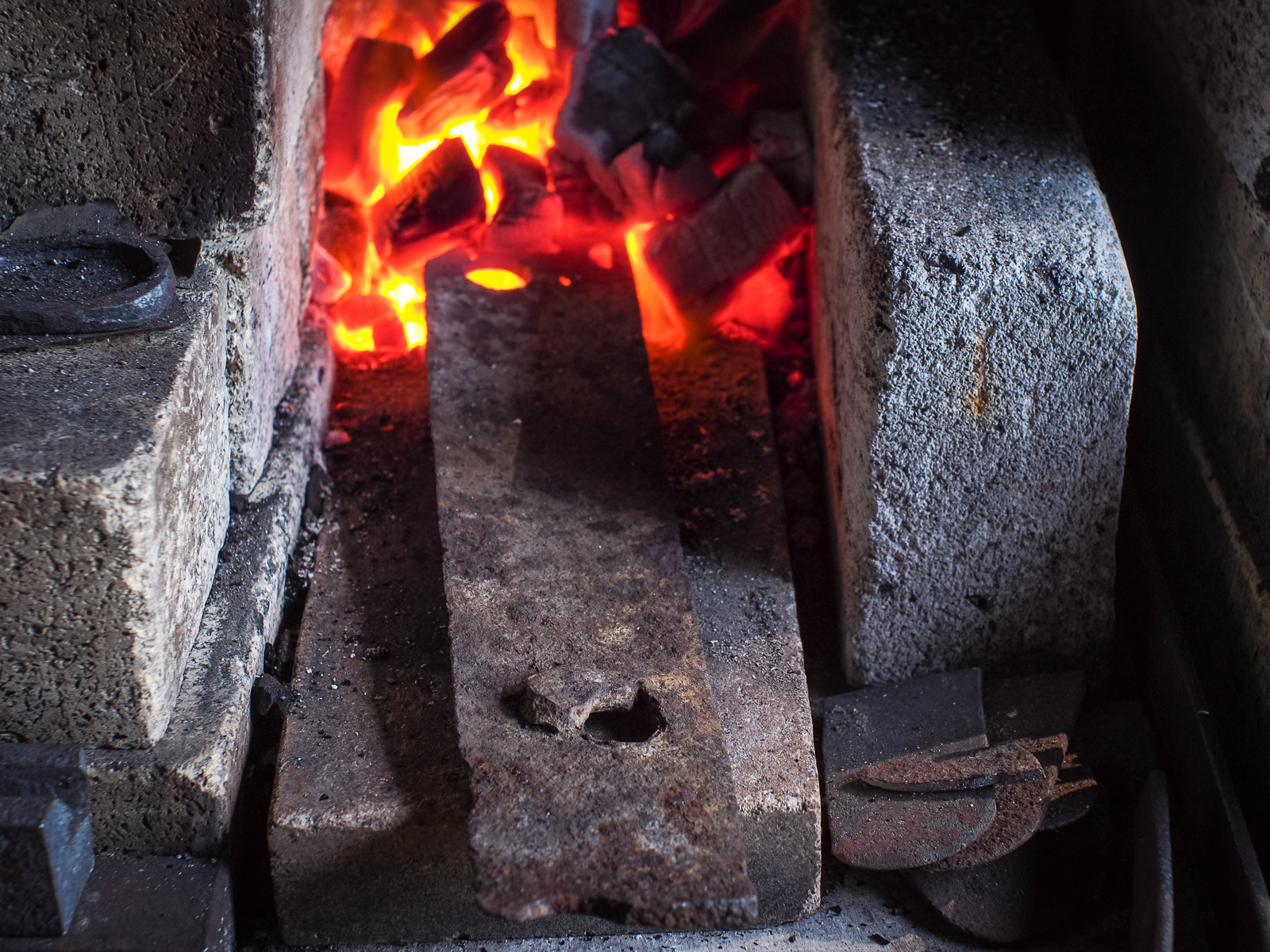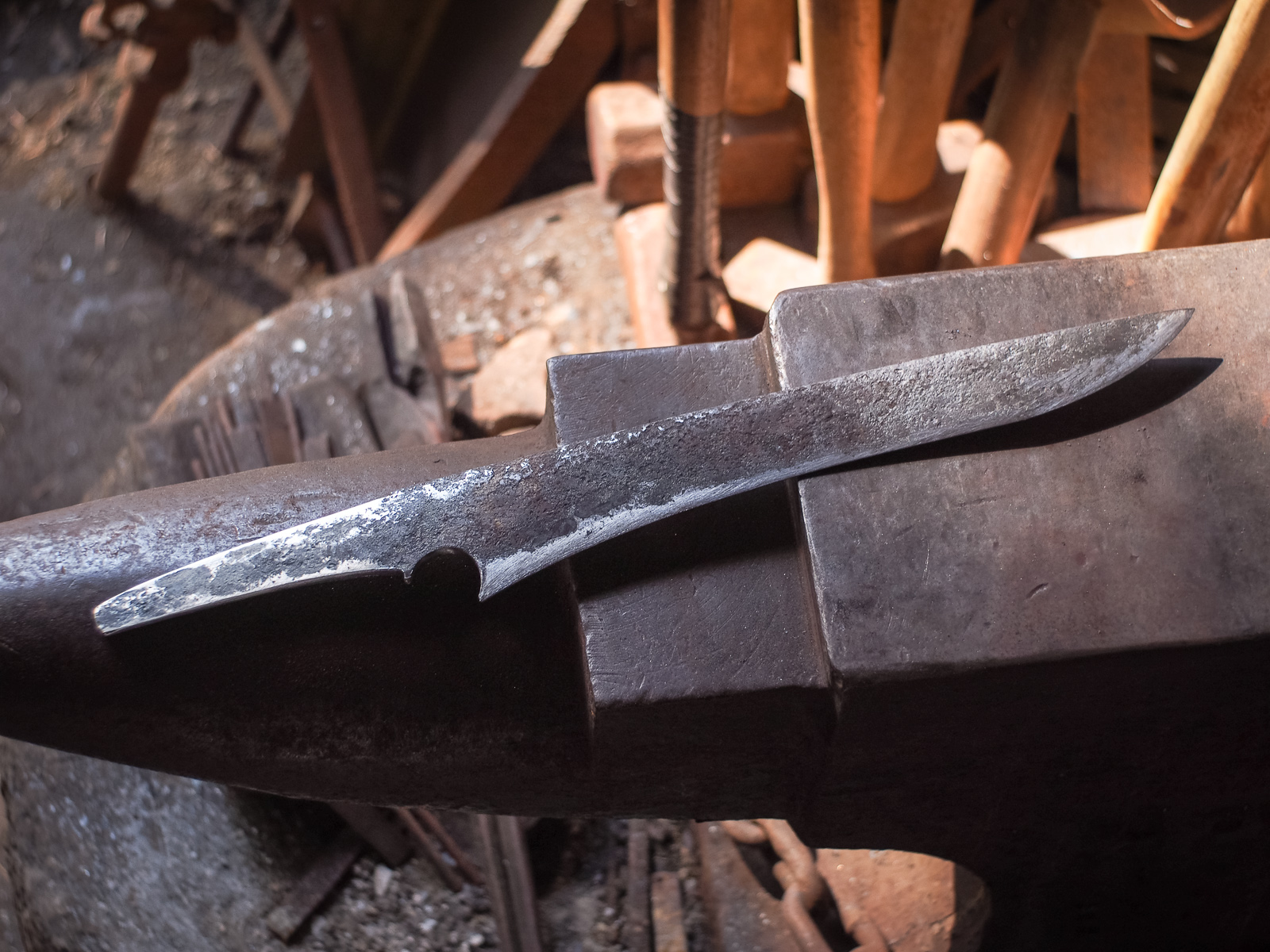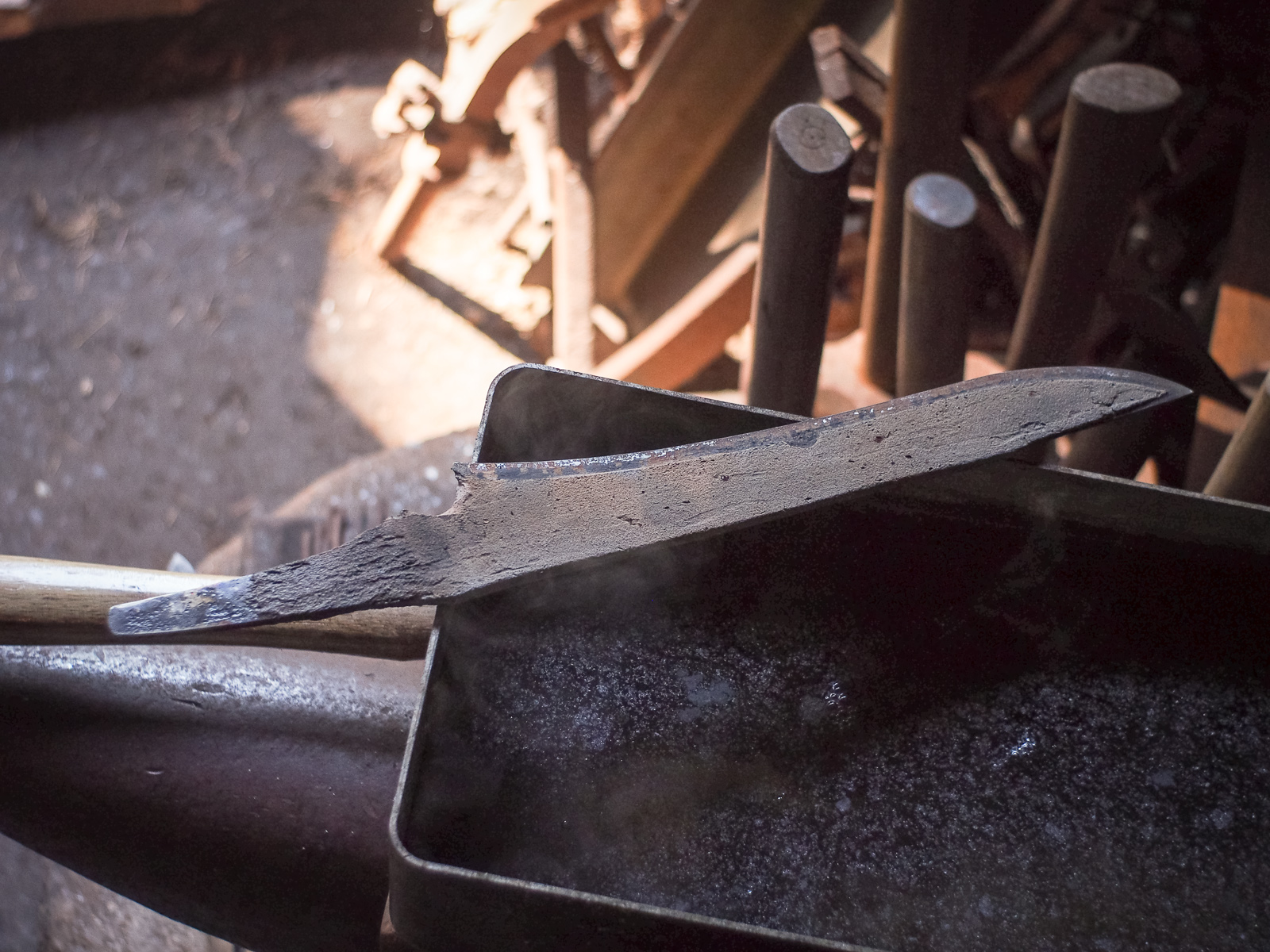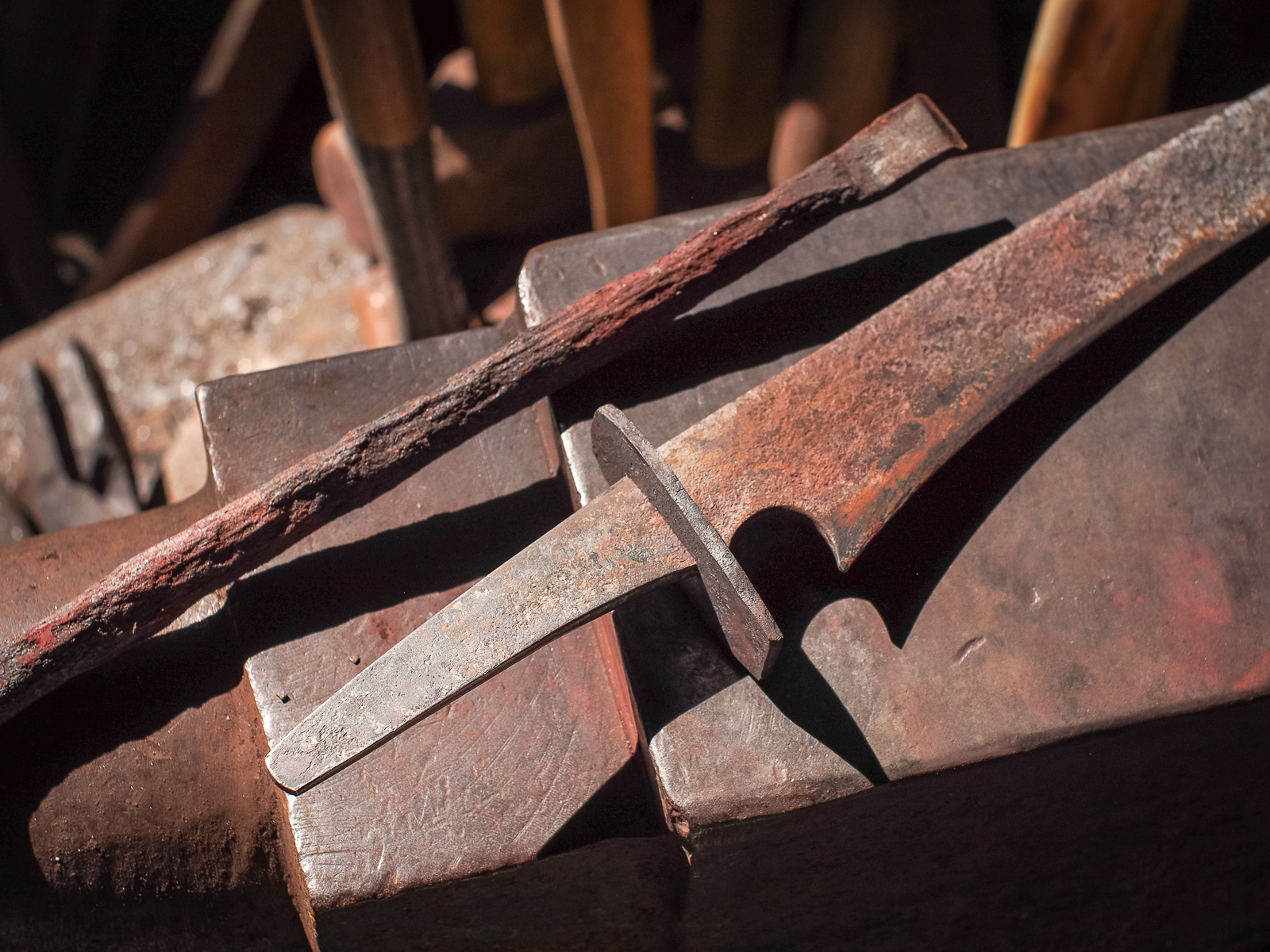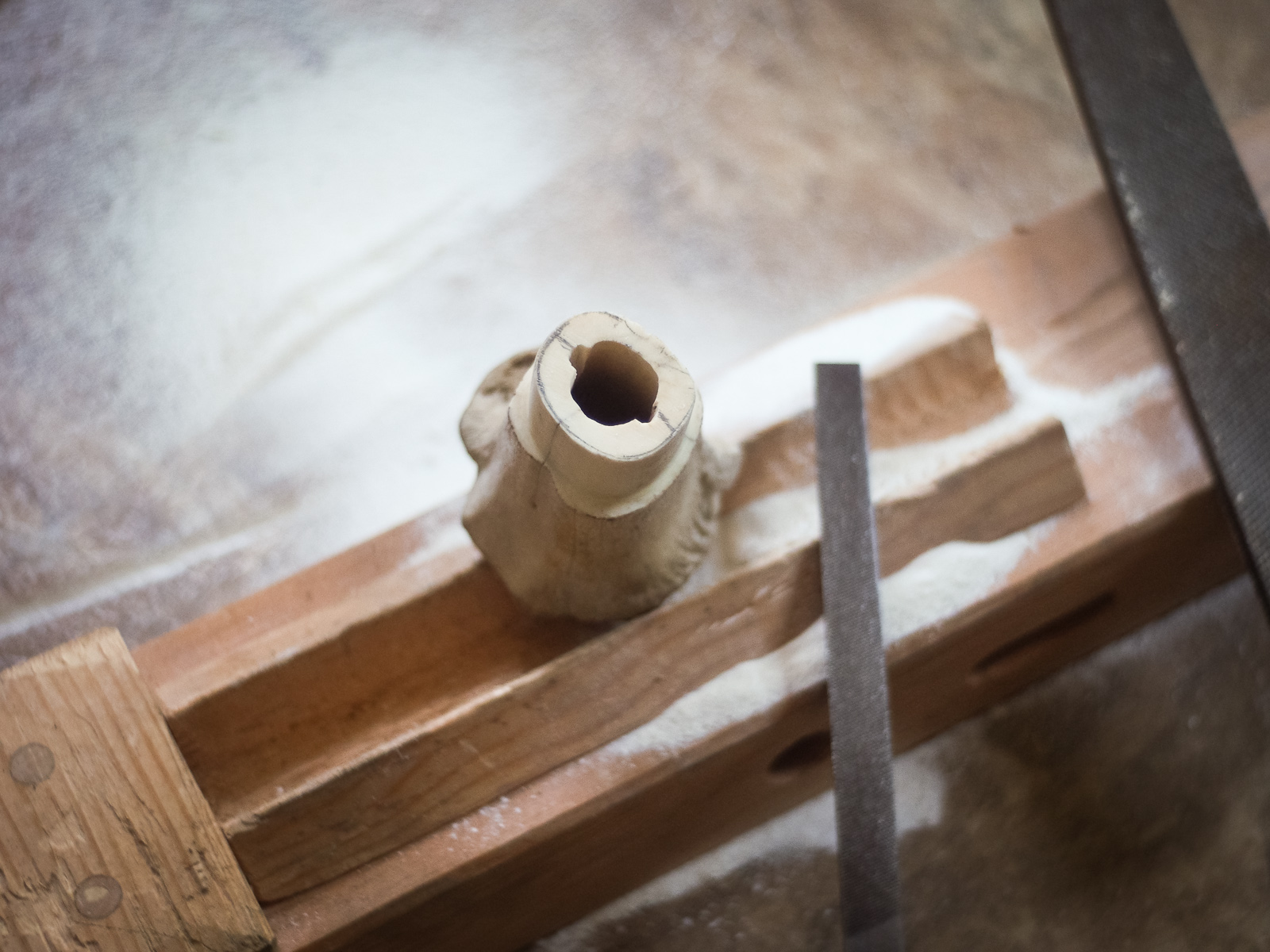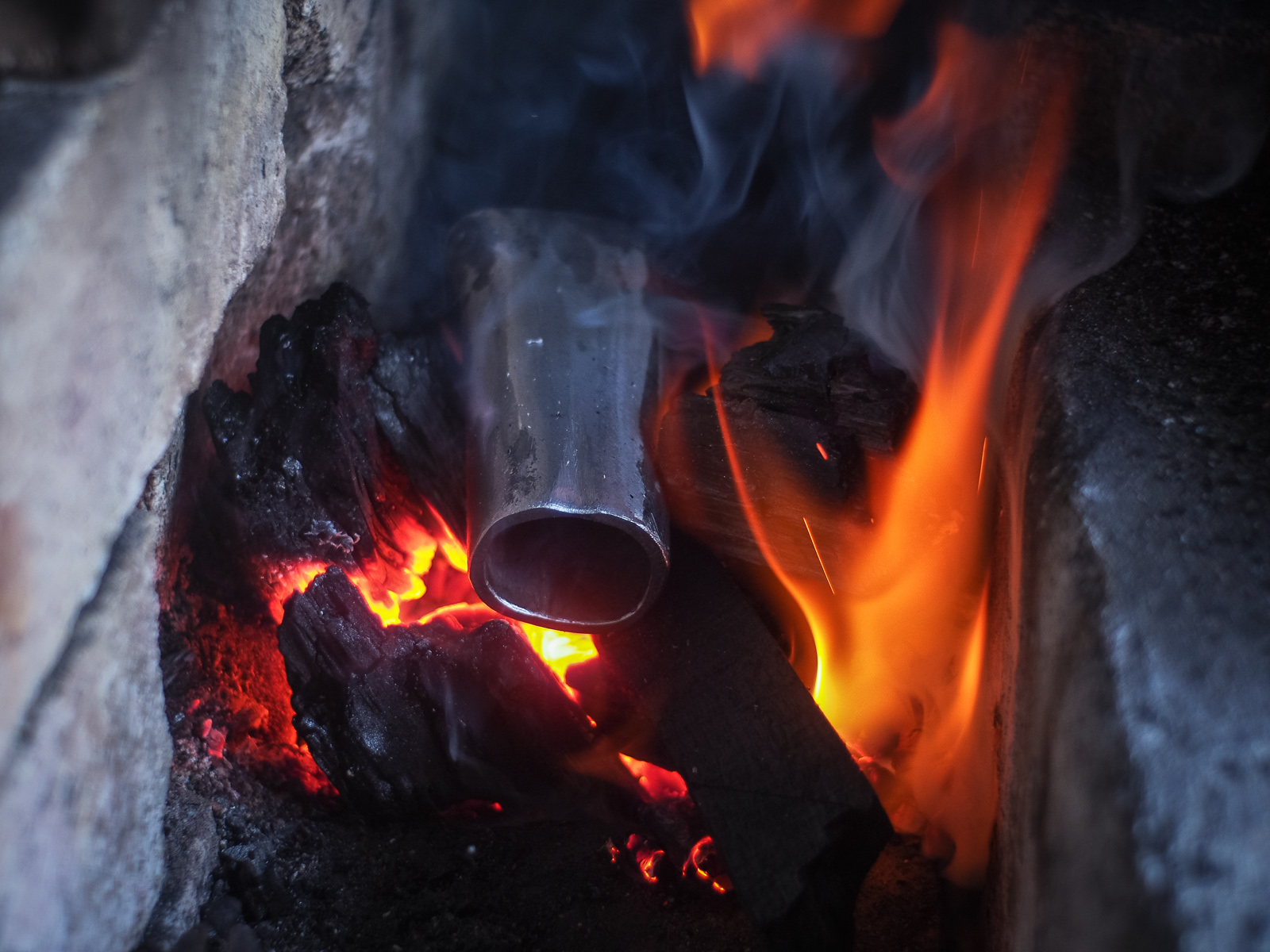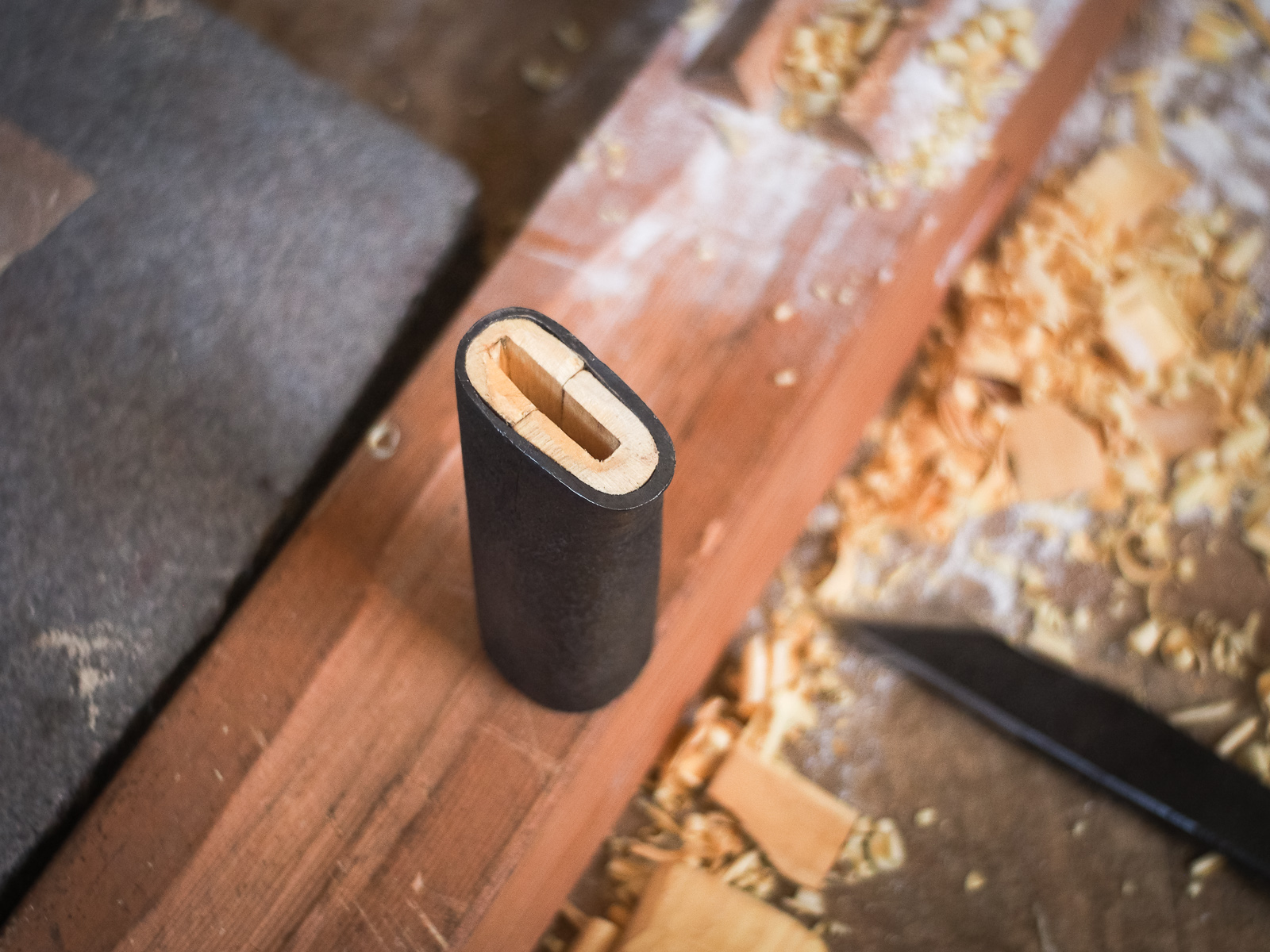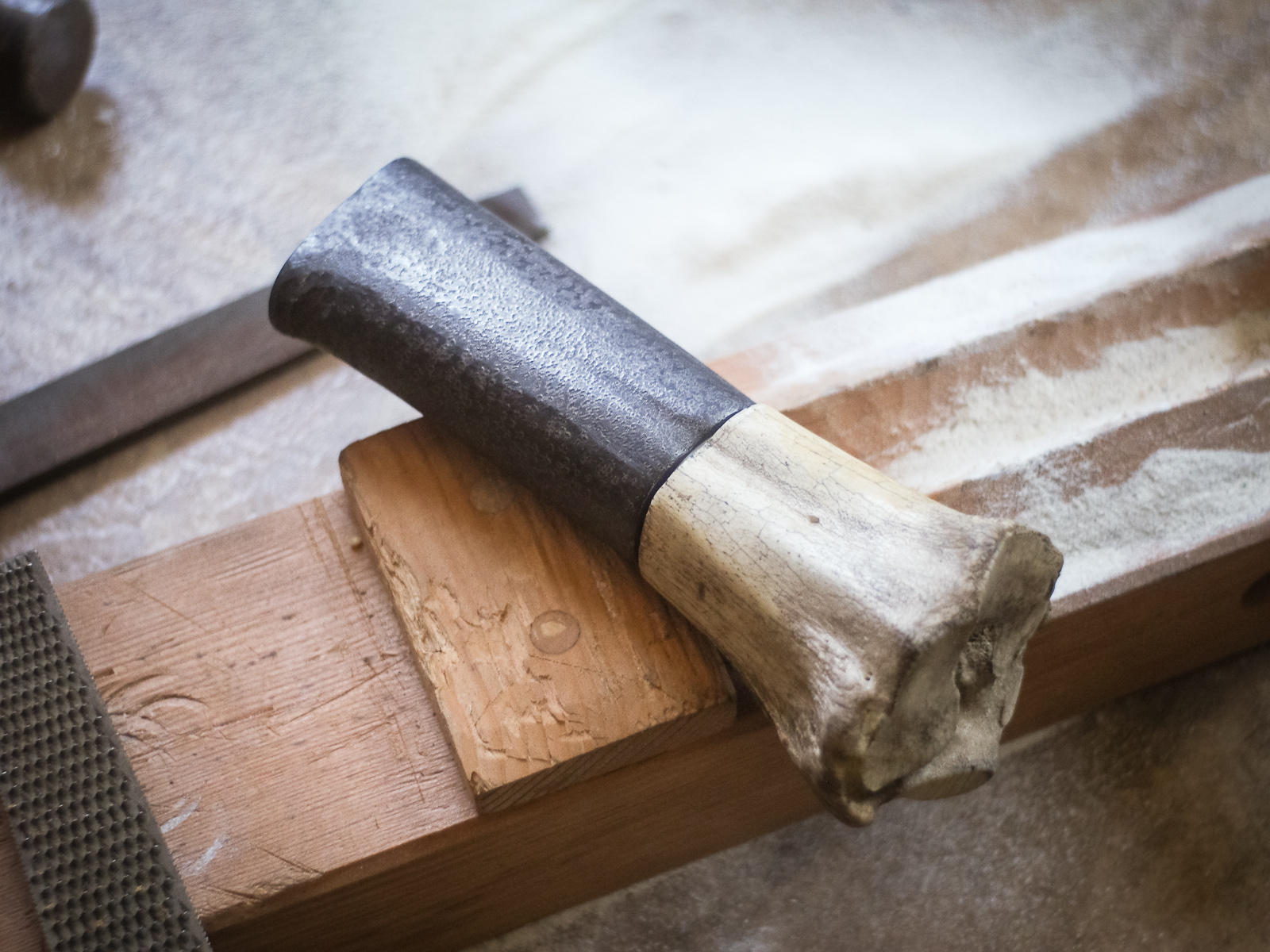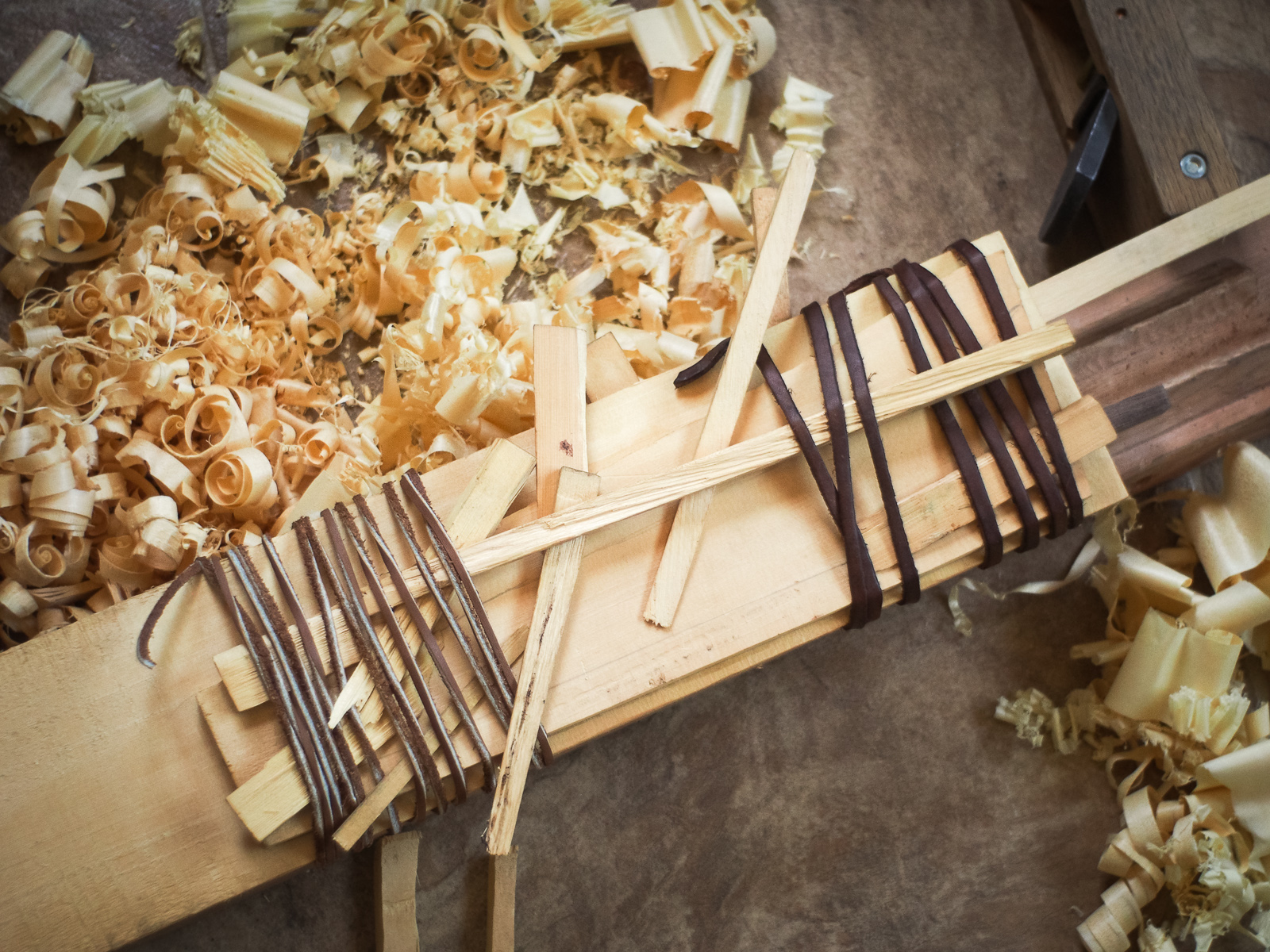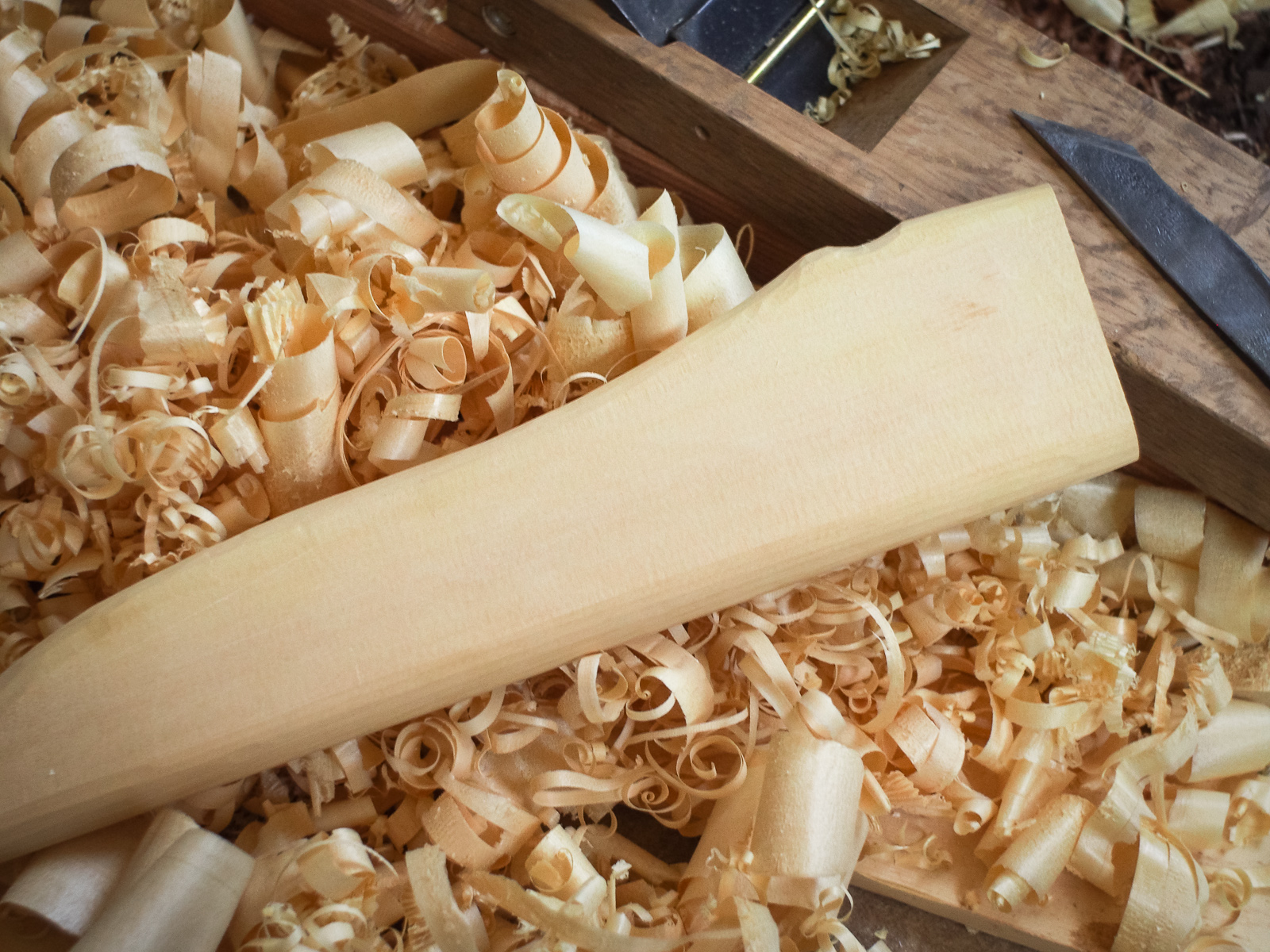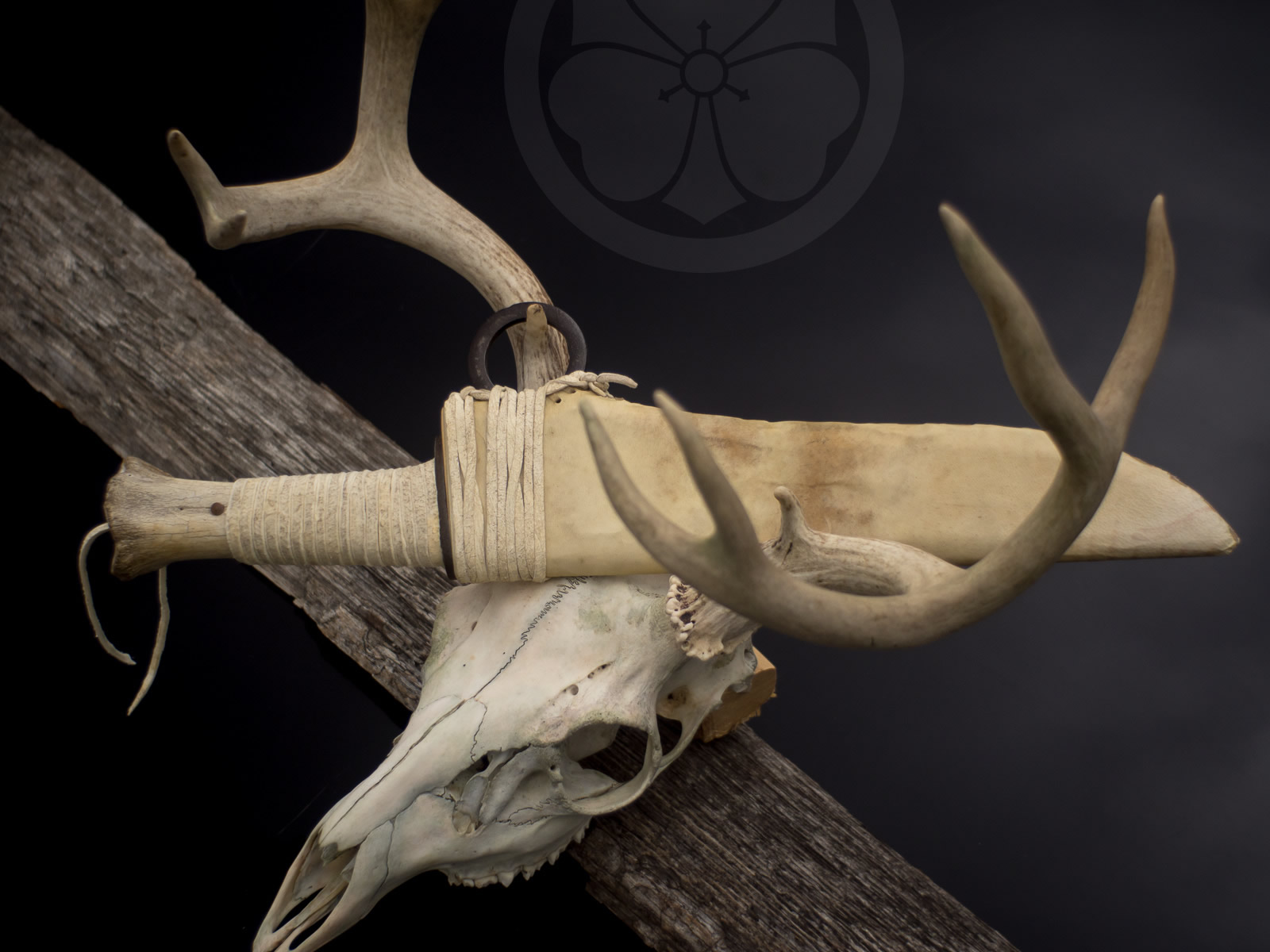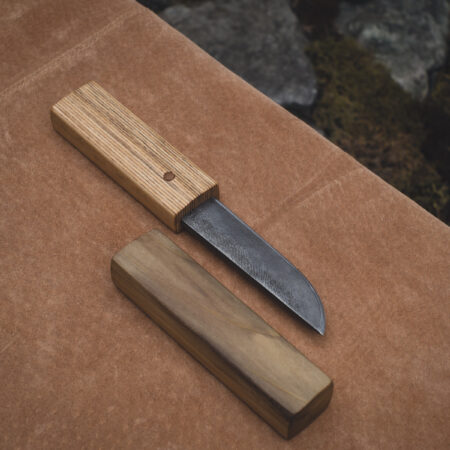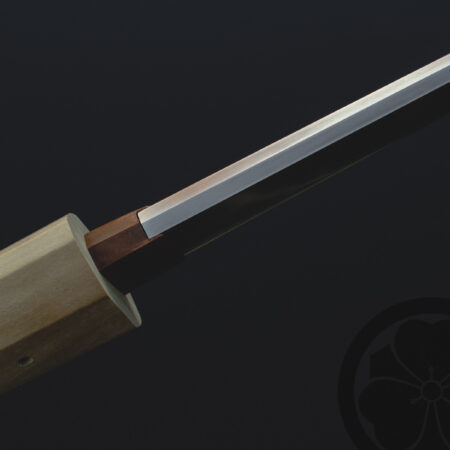Description
This project is part of the artifact series which tend to have the appearance of far older variations of my fusion style works and seem to come from an alternative history where cultures might have blended at different times and in different ways.
This particular work is more of a departure from my usual designs, but retains some of the elements and construction methods. One of the major challenges of this piece lay in the creation of the handle. Steel, wood, and aged bone were carefully shaped and fit together to form a sturdy mounting that evokes the feel of an ancient and organic piece.
The concept for this project began with the natural shape of a worn piece of farm equipment but has progressed to an exploration of the possibilities of an alternative history and the artifacts it might have produced.
Made from reclaimed plowshare steel, the blade was hand forged in a charcoal fire, shaped with files, differentially-hardened using traditional water quench yaki-ire, and sharpened by hand with natural water stones. The surface of the blade retains all of the original character of the plow share and has been minimally altered by careful forging only where necessary to complete the shape. Blade construction is muku with an offset (airfoil-shaped) hirazukuri profile.
The guard was forged from wrought iron salvaged from the sea and the handle is wrapped with traditionally hand-tanned deer hide. Due to the centered mass of the bone and steel handle, the blade feels surprisingly maneuverable for its length. The mounting is held together with a sturdy bamboo peg through the tip of the tang and is a takedown blade though I do not recommend dis-assembly due to the close tolerances of the assembly. The scabbard core is carved from Nootka Cypress and wrapped in rawhide and hand tanned deerhide.
Though the project did not proceed directly from historical elements, it shares some characteristics with warabite-to as well as with other materials and techniques in use at the beginning of the iron age in Japan (somewhere in the latter third of the Yayoi period) and in North America before history was being written down.
The blade is approximately 10.5″ long, the full length is 16.5″ long, and the overall length when sheathed is about 18.25″. Accompanied by a full colour 20 page hardcover photo book documenting the process.
Specifications
長さ/刃長 Nagasa: 270mm
元幅 Motohaba: 30mm at centre
重ね/元重 Motokasane: 5mm
反り Sori: uchizori
中心/茎 Nakago: ~100mm
柄長 Tsuka: 150mm
拵全長 Koshirae: 463mm
形 Katachi: offset hirazukuri, natural maru mune
刃文 Hamon: suguha
帽子/鋩子 Boshi: ko-maru
中心/茎 Nakago: futsu, kuri-jiri, one mekugi-ana, signed near the tip
銘 Mei: hot stamped katabami-ken kamon
拵 Koshirae: fusion/alternative, issaku
Materials: Plowshare steel, wrought iron from the sea, bone, Nootka Cypress, bearing ring, rawhide, hand tanned deerhide, bamboo
This piece is currently in a private collection in New York.
Current price for a similar work: $4800
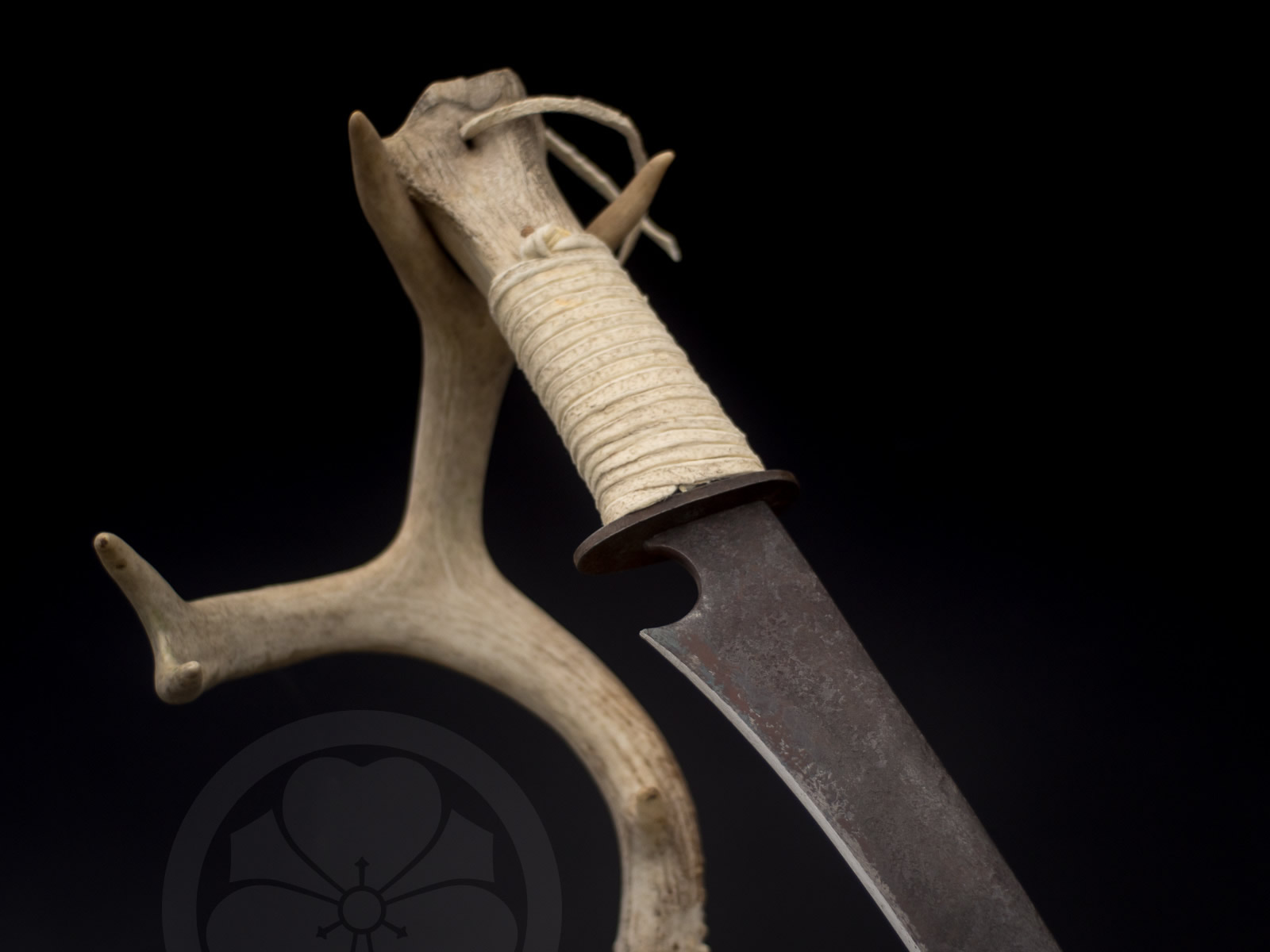
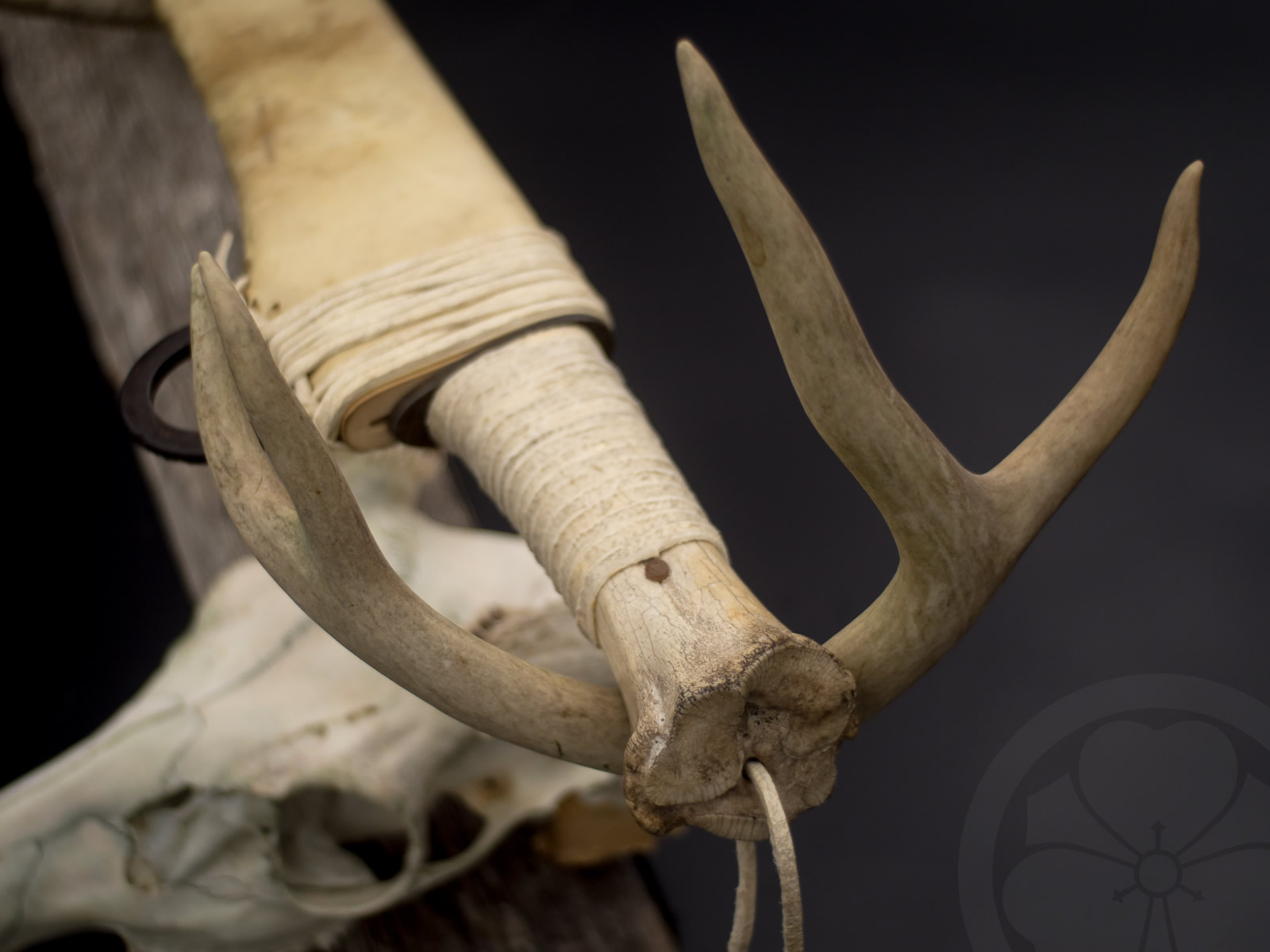
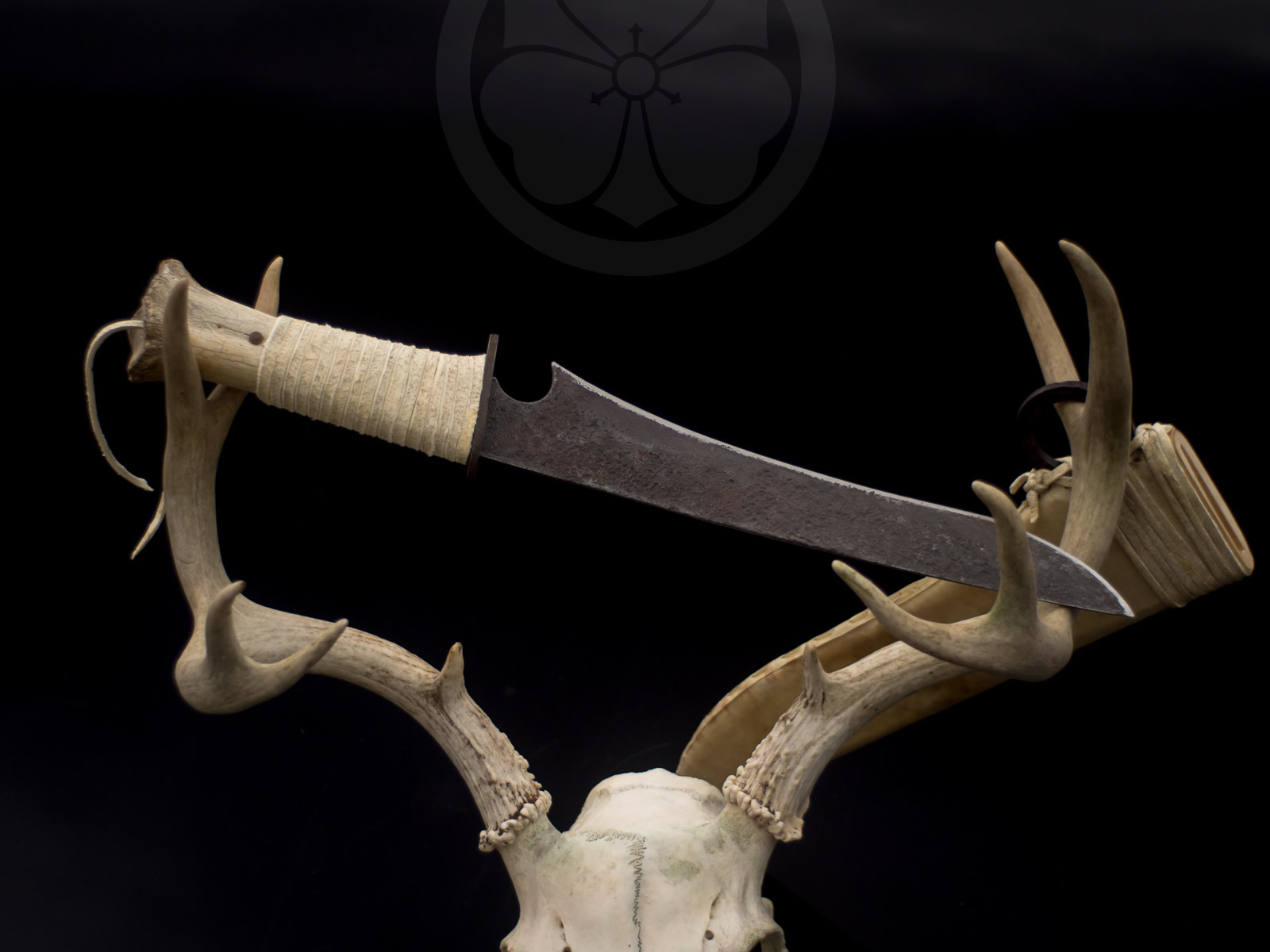
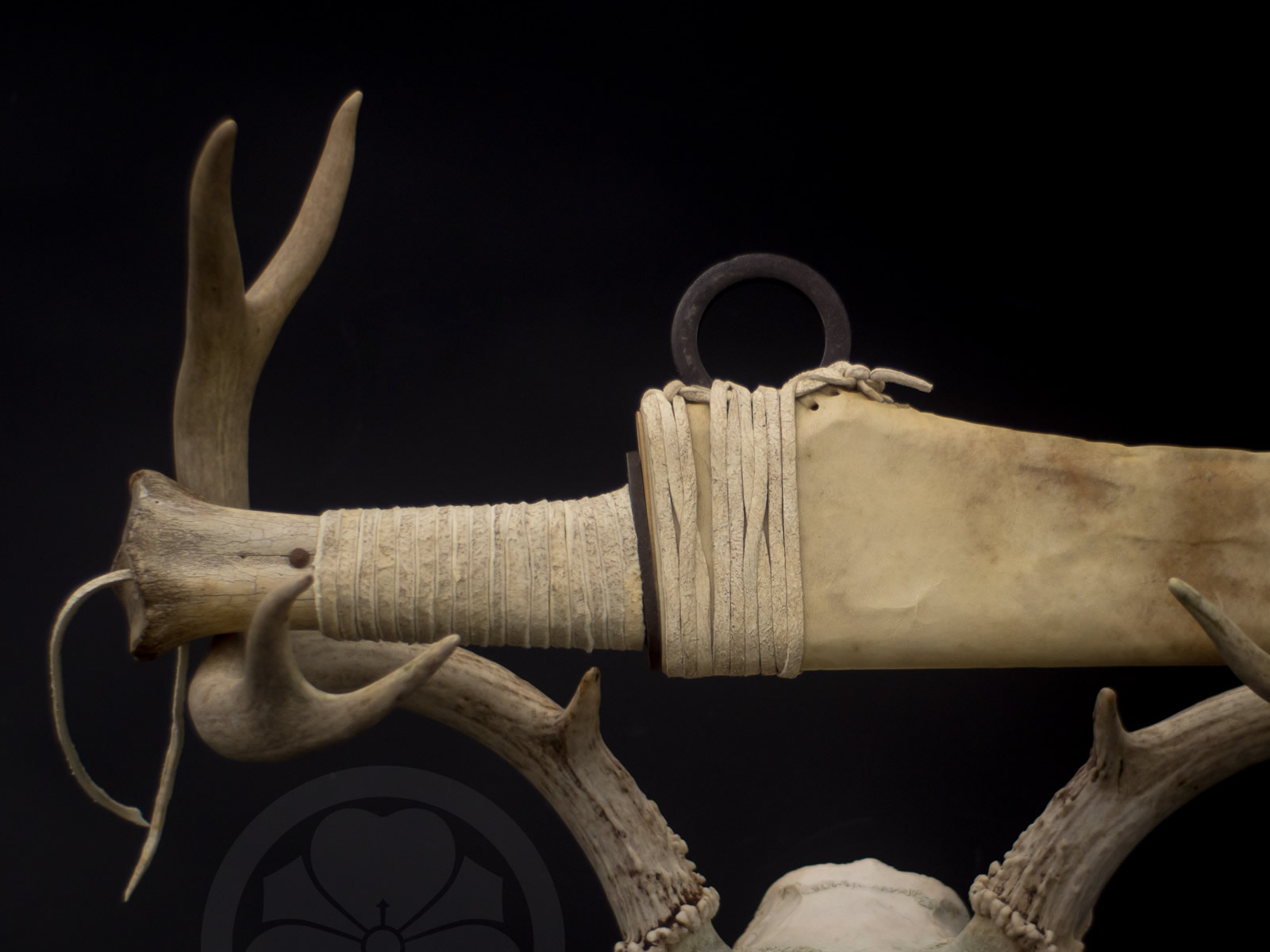
Process
